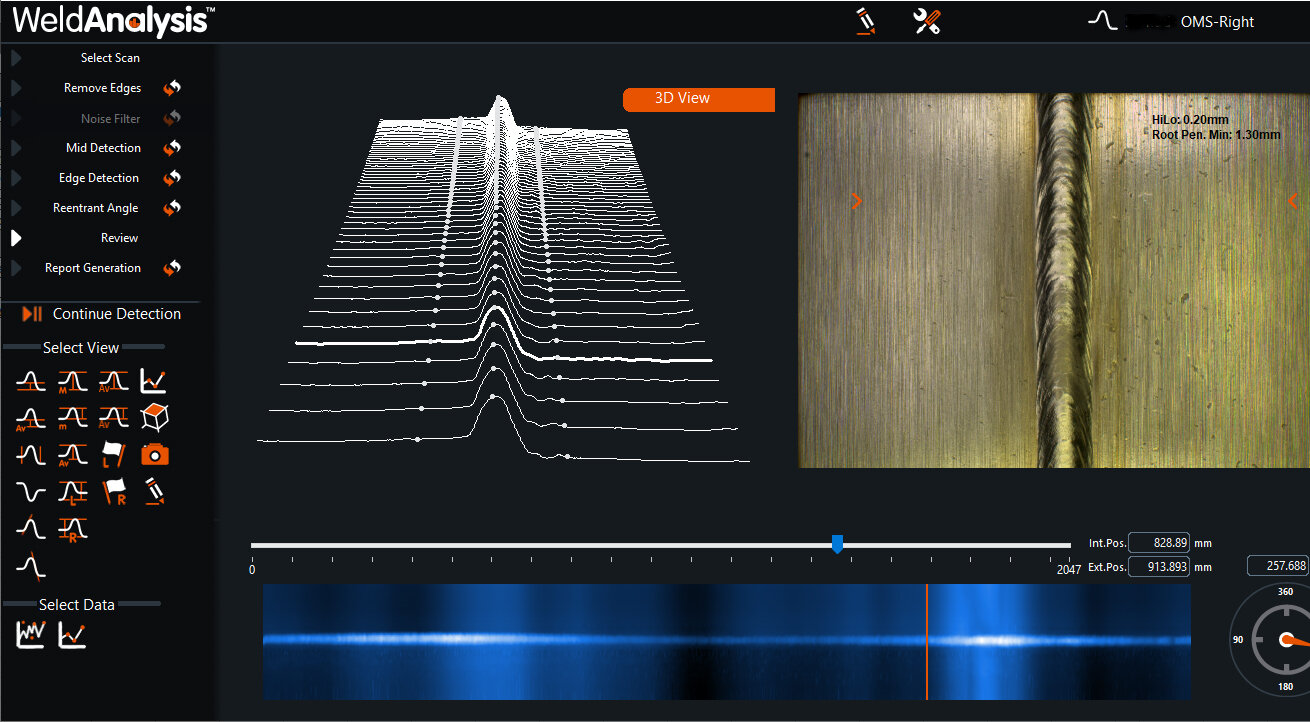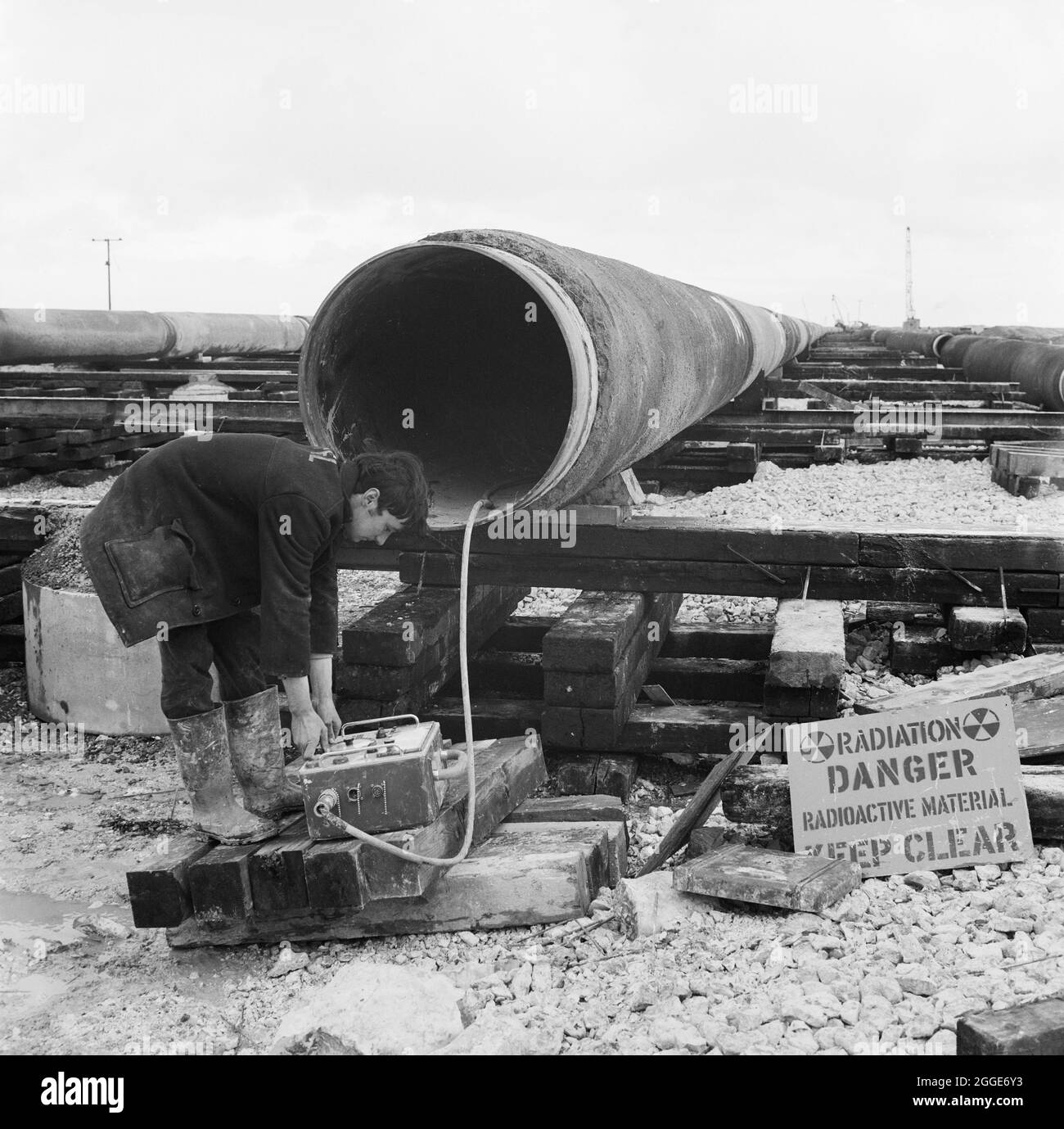Comprehending the Principles of Pipe Welding Evaluation: Important Variables for Evaluating Weld Quality and Fighting Failings
In the world of pipe welding evaluation, the risks are undoubtedly high, demanding a comprehensive understanding of basic concepts to make certain weld quality and alleviate failing threats. Various crucial aspects come into play, including the selection of ideal materials, the application of innovative evaluation methods, and the recognition of widespread welding issues.
Value of Weld High Quality
The stability of a pipeline is fundamentally dependent on the quality of its welds, making weld top quality an essential variable in guaranteeing efficient and risk-free procedure. A pipe weld acts as a junction point where materials are signed up with, and any kind of shortages in this field can result in considerable architectural weak points. Poor bonded high quality can cause leaks, tears, and tragic failings, positioning serious safety and security threats and ecological risks.
A number of elements add to the high quality of a weld, consisting of the option of welding process, the abilities of the welder, and the conditions under which the welding is carried out - Pipeline Welding Inspection. Insufficient prep work, incorrect heat input, and contamination can compromise weld stability, bring about concerns such as porosity, incomplete blend, or splits. For that reason, rigid top quality control steps must be applied throughout the welding process to alleviate these dangers
In addition, the lasting efficiency of a pipeline is greatly influenced by the sturdiness of its welds. Top quality welds not only improve the total toughness of the pipeline however additionally expand its service life, minimizing the requirement for costly repair services and downtime. Hence, guaranteeing remarkable weld top quality is critical in pipe layout and maintenance practices.
Key Evaluation Methods
Making certain weld quality necessitates the application of efficient inspection methods to determine prospective defects prior to they cause failings. Pipeline Welding Inspection. Amongst one of the most commonly made use of methods are visual assessment, radiographic screening (RT), ultrasonic testing (UT), and magnetic fragment testing (MT) Each technique is and serves a distinctive function picked based upon the specific needs of the pipeline task
Aesthetic examination is the very first line of protection, permitting inspectors to evaluate surface conditions, positioning, and general workmanship. Radiographic testing offers a detailed sight of interior weld honesty by making use of X-rays or gamma rays to spot subsurface defects.
Ultrasonic screening employs high-frequency acoustic waves to evaluate the density and integrity of welds, making it perfect for detecting inner interruptions. Magnetic fragment testing is a trustworthy technique for determining surface area and near-surface defects on ferromagnetic materials by using electromagnetic fields and fine ferrous fragments. By using these crucial assessment techniques, pipeline welding inspectors can guarantee the best requirements are maintained, inevitably leading to safer and much more trusted pipe systems.
Common Welding Problems
In the world of pipeline welding, recognizing usual welding defects is important for preserving architectural integrity and safety. These problems can cause tragic failings if not identified and attended to immediately. Among the most widespread issues are porosity, which takes place when gas allures in the weld metal, producing voids that damage the joint. One more considerable problem is lack of fusion, where the weld steel does not adequately bond with the base material, endangering the joint's stamina.

Fractures are also an essential issue, showing up in different forms such as warm fractures, cool cracks, and origin fractures. Each kind presents special difficulties and Website needs details assessment methods for discovery. Undercut is one more problem that can reduce the weld's cross-sectional location, leading to stress concentration points, while slag inclusion happens when non-metallic material becomes caught in the weld pool, detrimentally affecting the mechanical residential or commercial properties of the weld.
Additionally, inaccurate bead form can cause uneven stress and anxiety distribution. Acknowledging these typical flaws is important for examiners and welders alike, as early discovery and adjustment are vital to ensuring the longevity and integrity of pipe systems.

Products and Their Influence
Choosing the ideal materials for pipeline welding considerably influences the overall performance and integrity of the bonded joints. The selection of base metals, filler materials, and finishes plays an essential function in figuring out the stamina, deterioration resistance, and toughness of the welds. As an example, carbon steel is typically used for its balance of stamina and price, but it may be at risk to rust in certain atmospheres, demanding the usage of corrosion-resistant alloys or protective finishes.
In addition, dissimilar metal welding calls for mindful consideration of thermal growth residential properties and possible galvanic deterioration. The compatibility of materials can significantly influence the microstructure of the weld, leading to variations in mechanical residential or commercial properties. For instance, stainless steel offers exceptional rust resistance however may need certain filler products to guarantee a sound weld joint.
Additionally, the influence of temperature and environmental problems on material option can not be ignored. High-strength steels may shed ductility at elevated temperatures, while low-temperature applications could need materials with improved strength. Inevitably, understanding the ramifications of material selections is crucial for attaining optimum weld quality and preventing failings in pipeline systems.

Regulatory Specifications and Compliance
Regulatory criteria and compliance play a critical duty in pipe welding, developing the framework within which risk-free and efficient techniques are maintained. These requirements are created by different companies, consisting of the American Society of Mechanical Engineers (ASME), the American Welding Culture (AWS), and the Pipeline and Hazardous Materials Safety And Security Administration (PHMSA) Abiding by these laws makes certain that welding treatments fulfill the called for quality and safety standards.
Compliance with governing standards is vital not just for ensuring the integrity of the welds however additionally for securing the atmosphere and public safety. Inspectors are charged with validating that welding operations adhere to these criteria via extensive evaluations of both the procedures and the final welds. This entails examining welder qualifications, welding procedures, and the materials made use of.
Failing to comply with recognized regulations can lead to considerable consequences, including pricey repair services, legal obligations, and disastrous failings. Therefore, companies should integrate compliance right into their operational practices, promoting a culture of security and high quality. Regular training and audits are essential parts in keeping adherence to these governing standards, making sure that all workers are educated and geared up to promote the greatest levels of pipe welding high quality.
Conclusion
In conclusion, Clicking Here a comprehensive understanding of pipeline welding examination is vital for guaranteeing weld high quality and avoiding failures. By employing crucial examination methods and identifying usual welding flaws, assessors can successfully examine the stability of welds.
In the world of pipe welding assessment, the risks are unquestionably high, requiring a comprehensive understanding of fundamental concepts to guarantee weld quality and alleviate failure risks (Pipeline Welding Inspection).The stability of a pipeline is basically reliant on the high quality of its welds, making weld quality a critical aspect in guaranteeing safe and efficient procedure.A number of factors contribute to the top quality of a weld, including the choice of welding procedure, the abilities of the welder, and the problems under which the welding is performed. Undercut is an additional problem that can reduce the weld's cross-sectional location, leading to tension focus factors, while slag incorporation takes place when non-metallic product comes to be trapped in read this post here the weld pool, detrimentally impacting the mechanical homes of the weld
In verdict, a comprehensive understanding of pipeline welding assessment is vital for making certain weld top quality and avoiding failures.
Comments on “Pipeline Welding Inspection: Guaranteeing Compliance with Market Specifications”